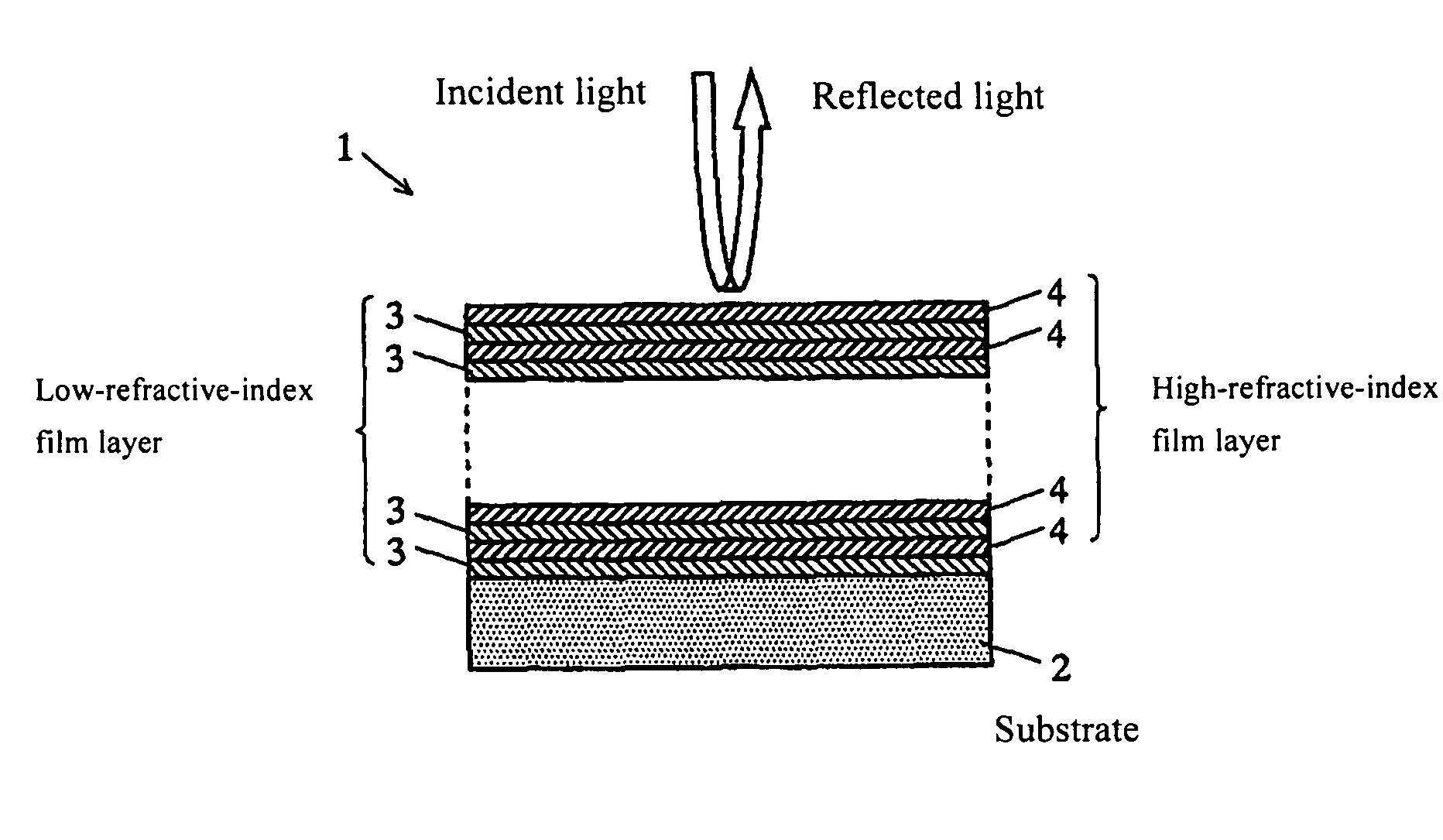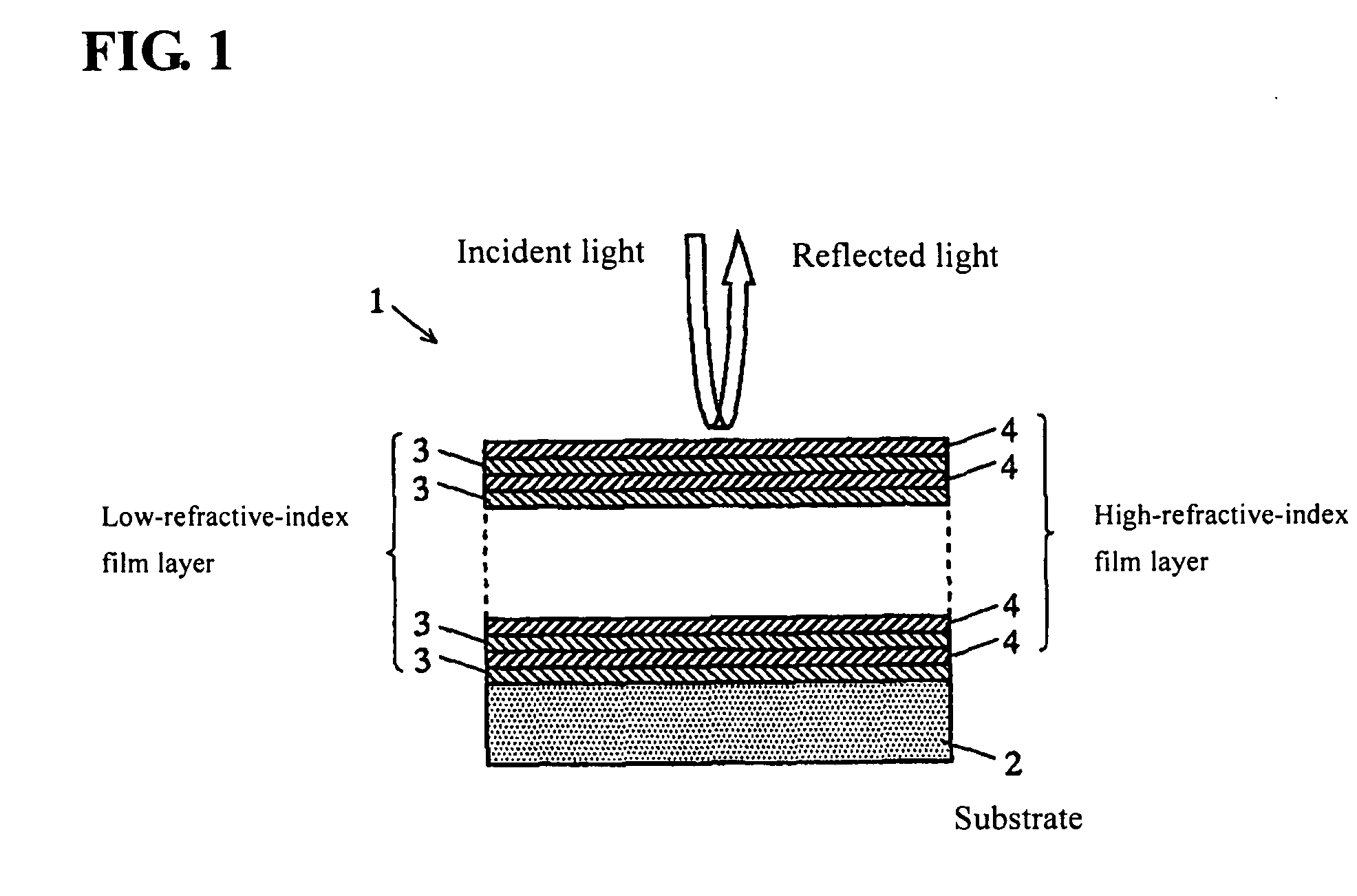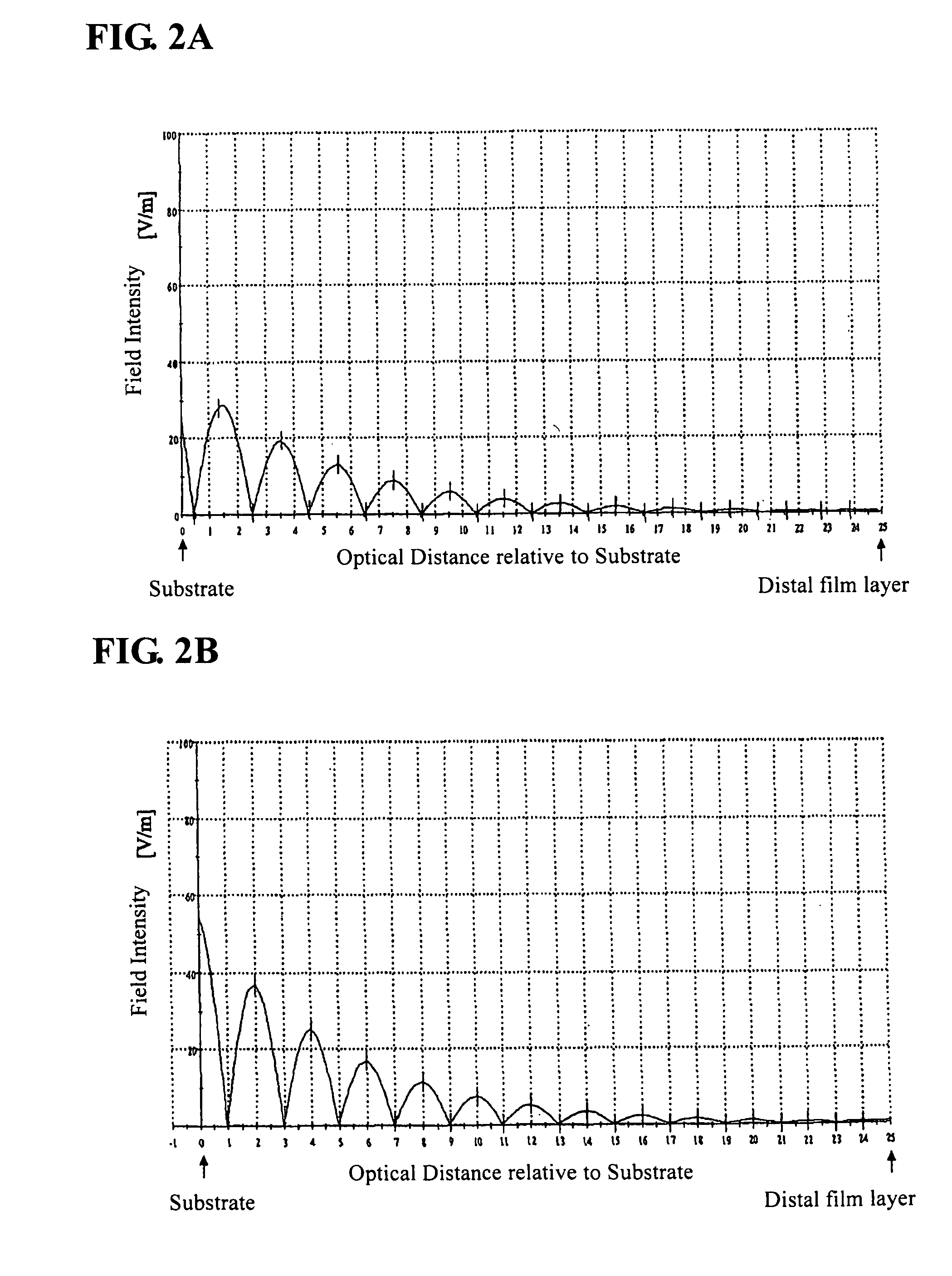Mirror for solid-state laser
a solid-state laser and mirror technology, applied in the direction of laser details, optics, instruments, etc., can solve the problems of accelerating the deterioration of reflectance, hardly achieving reflectance of 99% or more, and affecting the use of the mirror, so as to reduce energy loss due to absorption, improve the reflectance more, and suppress the effect of thermal damage due to light energy absorption
- Summary
- Abstract
- Description
- Claims
- Application Information
AI Technical Summary
Benefits of technology
Problems solved by technology
Method used
Image
Examples
Embodiment Construction
[0017] A solid-state laser multilayer-film mirror according to one embodiment of the present invention will now be described. FIG. 1 is a schematic sectional view of the multilayer-film mirror.
[0018] The multilayer-film mirror 1 comprises a substrate 2 made of synthetic silica and subjected to precision polishing, i.e., polished to have a surface with high flatness, and a multilayer film formed on the substrate 2 by alternately laminating a low-refractive-index film layer 3 made of a dielectric material having relatively low refractive index, and a high-refractive-index film layer 4 made of a dielectric material having a relatively high refractive index. Each of the film layers 3, 4 may be formed using a conventional apparatus for forming a thin film based on a vapor-phase deposition process, such as a resistance heating vapor deposition process, an ion beam process or a sputtering process.
[0019] For example, when the multilayer-film mirror 1 is used in a solid-state laser having ...
PUM
 Login to View More
Login to View More Abstract
Description
Claims
Application Information
 Login to View More
Login to View More - R&D
- Intellectual Property
- Life Sciences
- Materials
- Tech Scout
- Unparalleled Data Quality
- Higher Quality Content
- 60% Fewer Hallucinations
Browse by: Latest US Patents, China's latest patents, Technical Efficacy Thesaurus, Application Domain, Technology Topic, Popular Technical Reports.
© 2025 PatSnap. All rights reserved.Legal|Privacy policy|Modern Slavery Act Transparency Statement|Sitemap|About US| Contact US: help@patsnap.com



